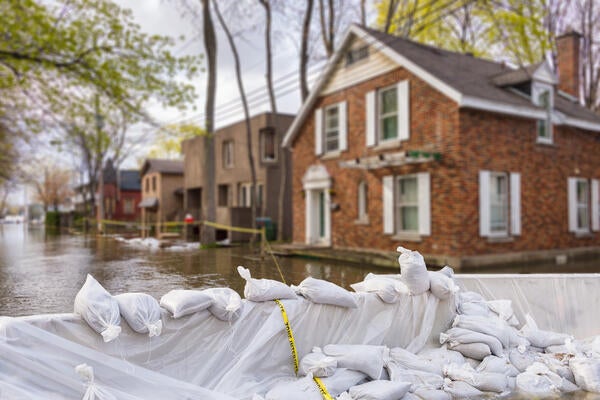
Who should pay for services that watersheds provide?
Paying for watershed services could help preserve water ecoystems around the world, says Water Institute executive director

Paying for watershed services could help preserve water ecoystems around the world, says Water Institute executive director
By Amy Geddes The Water Institute
Forests, wetlands and grasslands all provide “watershed services” by enhancing water quality and supply, biodiversity and carbon storage. They have economic value but unfortunately their market price is $0, says the executive director of the Water Institute.
Roy Brouwer, also a University of Waterloo economics professor, is researching how to attach the right price to the essential services that watersheds provide. He says, when used properly, these payment schemes could significantly help preserve water ecoystems around the world.
“An important question is how to convince beneficiaries to pay for the water services they enjoy” says Brouwer. For example, a city downstream of a watershed that benefits from storm water retention upstream by wetlands managed and maintained on farmland.
The lack of effective water pricing practices means there is no incentive for water users to conserve valuable water resources.
Payments for watershed services is a growing practice, says Brouwer, especially in Latin America, but increasingly also elsewhere in the world. For example, a hydropower company may pay upstream farmers or forest companies to limit sediment runoff that can compromise the operation of the dam.
The challenge lies in understanding what payment schemes are most effective under which circumstances: Who should pay and how much? What indicators should be monitored? Pinpointing what makes these schemes effective is what Brouwer is investigating.
There are currently over 100 payments for watershed services schemes operating around the world. During a talk at World Water Week in Stockholm, Brouwer said the payment schemes are more common in developing countries but also of interest elsewhere. “It’s a very popular new policy instrument because it relieves pressure on government budgets. So it allows the market to play a role in environmental protection,” he said.
Brouwer and his colleagues have analyzed the success of these schemes and see potential, but say it is essential to understand what institutional and economic design factors make these schemes successful and how well they translate into long-term environmental performance. This will be an ongoing area of focus for Waterloo water researchers in the coming years.
Watch Brouwer's Q & A at World Water Week in Stockholm:

Read more
Researchers awarded funding to investigate ecology, climate change, repatriation, health and well-being through cultural and historical lens

Read more
Waterloo researchers propose solution to help communities escape the costly cycle of flood damage and rebuilding

Read more
Discover how Waterloo alumni are driving Canada’s economy with five tech companies making a local and global impact
The University of Waterloo acknowledges that much of our work takes place on the traditional territory of the Neutral, Anishinaabeg, and Haudenosaunee peoples. Our main campus is situated on the Haldimand Tract, the land granted to the Six Nations that includes six miles on each side of the Grand River. Our active work toward reconciliation takes place across our campuses through research, learning, teaching, and community building, and is co-ordinated within the Office of Indigenous Relations.